-

NUMEROUS FISH TRAPS WERE BUILT BY FIRST NATIONS PEOPLE ACROSS AUSTRALIA
•
Here is an example of possibly a lesser known type “Kurka gorl”, an Aboriginal fish trap on the Glyde River near Ramingining, north-central Arnhem Land, 1937. “The principle is that at a high tide fish, stranded higher up by receding flood waters, will try to return to the sea; the…
-

In 1939, in North Carolina, Mrs. Ethel Holsbrook, aged 33, was one of many rural women engaged in tobacco bag stringing, a crucial part of the tobacco industry in the region.
•
This task was a staple in the agricultural work of North Wilkesboro and surrounding areas, where tobacco farming was a dominant industry. Tobacco bag stringing involved the labor-intensive process of preparing and packaging tobacco leaves, a step necessary before the leaves could be shipped to markets. The work required dexterity…
-
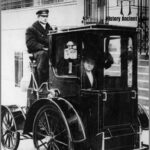
In 1910, a female passenger in a taxi cab in New York captured a moment of elegance amidst the vibrant chaos of early 20th-century urban life.
•
The scene, likely set in Manhattan, reflects the city’s growing status as a bustling metropolis at the dawn of the modern age. Taxis, still a relatively new form of transportation, were becoming a symbol of convenience and sophistication. The woman in the cab, dressed in fashionable attire of the period—perhaps…
-
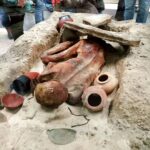
The Gebelein Man
•
Introducing the Gebelein Man, an astonishing figure from ancient Egypt whose remains have defied the passage of 5,500 years and emerged as one of the most remarkably preserved individuals. Believed to have been laid to rest around 3500 BC or even earlier, at the Gebelein site in Upper Egypt, this…
-

Which insect can grow larger than a mouse and has mandibles strong enough to snap a pencil in half?
•
That would be the titan beetle (Titanus giganteus)! Growing up to 6.5 in (16.5 cm) long, this enormous insect can be found in tropical rainforests in parts of South America. Experts think this critter is about as big as a beetle can get. Why? In insects, the oxygen to keep…
-

New discoveries off Egyptian coast reveal underwater treasures and temples
•
A recent announcement from the European Institute for Underwater Archaeology (IEASM) revealed the discovery of “treasures and secrets” at the site of a sunken temple. The underwater archaeological expedition, led by renowned French marine archaeologist Franck Goddio, delved into the submerged remnants of a temple dedicated to the god Amun…
-
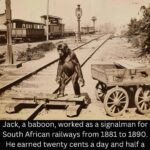
Jack, a baboon, was employed by the South African railways from 1881 to 1890 as a signalman.
•
His owner, James “Jumper” Wide, had lost both his legs in a railway accident and trained Jack to assist him with his duties. Jack quickly learned to operate the railway signals, and his remarkable accuracy and reliability earned him an official employment status. He was paid twenty cents a day…
-

In 1938, New Madrid County, Missouri, stood as a testament to the resilience of rural America during the lingering years of the Great Depression.
•
Located in the fertile Mississippi Delta, the county was home to hardworking families who relied on agriculture to sustain their livelihoods. Most families were sharecroppers or tenant farmers, cultivating land they didn’t own in exchange for a share of the harvest. Life was tough, but a strong sense of community…
-
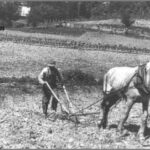
The photograph from Monroe County, Tennessee, in 1946 captures a moment of agricultural life in the rural South, showcasing Ben Ellis as he plows a cornfield with a mule along Coker Creek.
•
Dressed in a hat and overalls, Ellis is seen at the heart of the farming process, a tradition that had shaped the region’s economy for generations. The mule, an essential tool in pre-mechanized farming, highlights the manual labor still prevalent in many rural areas of Tennessee in the post-war period.…
-
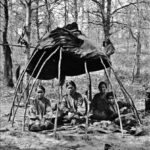
The Winnebago, also known as the Ho-Chunk, are a Siouan-speaking Native American tribe whose ancestral lands spanned across parts of Wisconsin, Minnesota, Iowa, and Illinois.
•
Known for their rich cultural heritage, the Winnebago have long been recognized for their resilience and adaptability. Despite facing various challenges over the centuries, including displacement and forced relocation, the Winnebago people have maintained their distinct identity and traditions. Traditionally, the Winnebago led a semi-nomadic lifestyle, relying on hunting, fishing,…